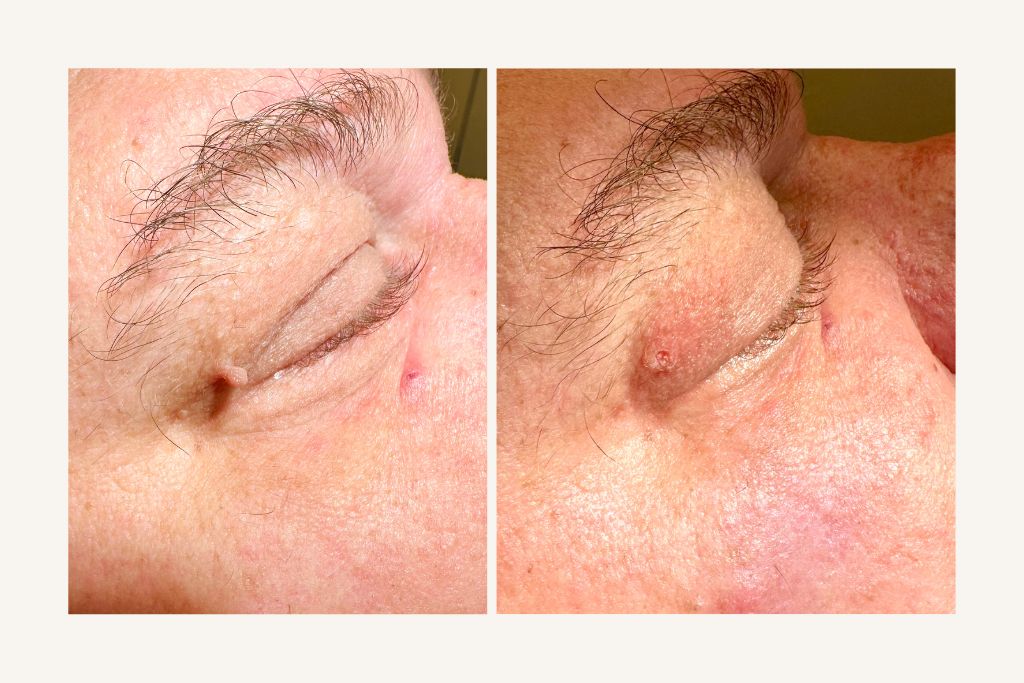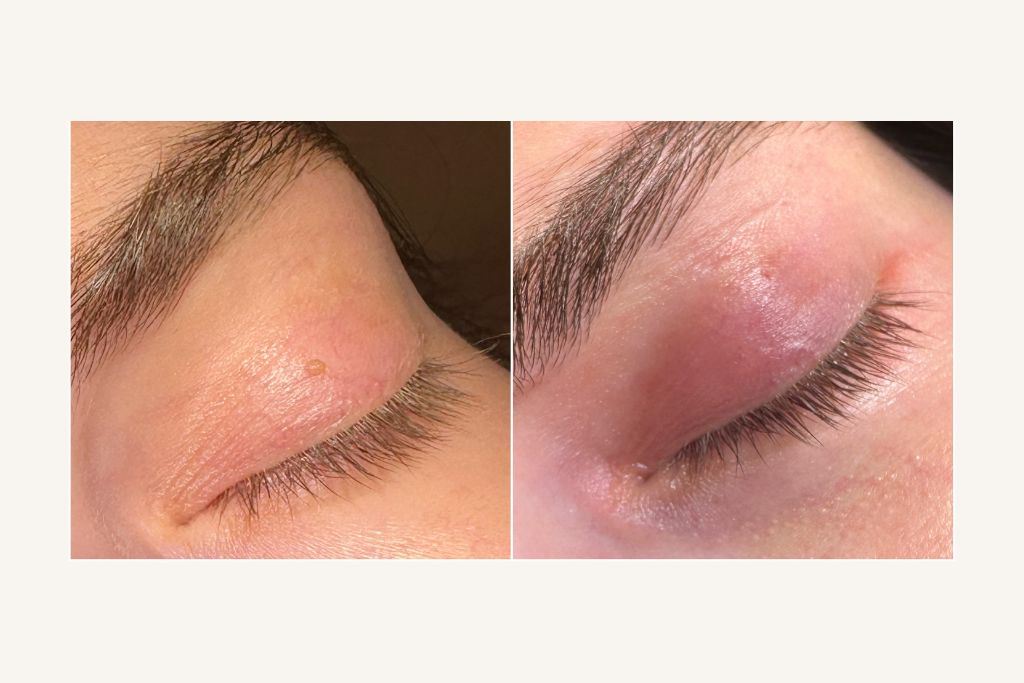Papilloma is a benign (non-cancerous) tumour, which usually forms on the surface of the skin and is a symptom of an active virus within the body. The viral infection is most commonly caused by direct contact with an infected individual or belongings, and during sexual intercourse.
These unattractive-looking derivatives most commonly appear in the neck, chest, stomach, and underarm areas, as well as eyelids, under breasts, and genitals. Papilloma spreads rapidly and causes discomfort in day-to-day life, the skin derivatives might feel uncomfortable under tight clothes, get in the way when brushing hair, shaving, and so on.

The main cause of these derivatives is the human papillomavirus (HPV), which is one of the most commonly spread sexually transmitted infections, with its high-risk forms posing as the main factor in developing cervical cancer.
There are over 120 types of HPV, out of which around 40 are transmitted during sexual intercourse. These types are numbered based on their genetic makeup and grouped under high-risk, low-risk, and undefined-risk genotypes in relation to cancer. High-risk HPV viruses cause changes in the cells of the cervix and external genitalia (vulva). Low-risk HPV causes condylomas in the external genitalia and transient primary cell changes.
Primum Estetica clinic provides a diagnostic lab test to determine whether the woman is infected with at least one of the 21 high-risk genotypes of HPV.
Approximately one-third of papillomas that appear on the surface of the skin disappear on their own. To remove the remaining derivatives, the fastest and most effective treatment is laser removal.
At Primum Estetica, we use clinical carbon dioxide (CO2) lasers, that are equipped with various removal programs.
The clinical practice of our doctors shows that laser removal of papillomas, in most cases, leaves no marks or scars, with very few exceptions.
What are the benefits of papilloma laser removal?
- The derivatives are easily removed both in visible and hard-to-reach areas of the body;
- the procedure is fast;
- the laser doesn’t damage the surrounding tissues;
- a dozen or even a few dozen benign skin derivatives can be removed during one visit;
- local anaesthesia is applied during the procedure, making the experience painless;
- the site of the derivative heals quickly;
- there’s a very low chance of scarring, compared to traditional surgical removal of derivatives.
How to prepare for the papilloma laser removal procedure?
- Avoid direct sunlight or using solarium in the 4 weeks leading up to the laser treatment;
- if you use blood thinners, stop taking them 3 days before the procedure.
How long does the papilloma laser removal treatment take?
Usually, the procedure takes 15-30 minutes. The duration depends on the number and size of the papilloma.
What does the laser papilloma removal procedure look like?
First, your dermatovenerologist will examine the derivatives that are to be removed and will thoroughly discuss the course of the treatment. If need be, the skin derivatives are further examined with a dermatoscope. Throughout the procedure, the laser fluence is concentrated and directed to the papilloma or other skin formations. The laser fluence is converted into heat, which removes the tumour by evaporating the water of its cells, leaving the surrounding skin intact.
Following the procedure, your doctor will advise you on the correct way to look after the skin at home, what products are encouraged and what should be avoided.
What to do after the papilloma laser removal procedure?
Usually, following the procedure, it is recommended to apply an antibacterial cream, which will be provided by your doctor, twice a day, for 5 – 7 days. It’s also recommended not to wet the area on the day of the procedure, to avoid scratching or rubbing of the skin. If the papilloma is removed from the skin on the face, it usually recovers within 5 – 7 days. Post-procedure skin on other parts of the body can take up to 10 – 16 days to recover. Furthermore, it’s very important to protect the treated area from direct sun exposure for a minimum of 2 months. It’s also recommended to use a protective sunscreen with SPF50+. Some treated papillomas may grow back. In such cases, the procedure has to be repeated.
Is it safe to get a laser treatment?
Laser skin derivative removal procedures are widely used in the world today. When performed by a qualified doctor, the procedure is completely safe and very effective.




